Bill Loguidice's Blog, page 103
May 8, 2016
Review: JINLONG Ergonomic Wired Game Computer Mouse
The JINLONG Ergonomic Wired Game Computer Mouse is an incredibly inexpensive pointing device with bold styling and a nice set of features. While the packaging and instructions (at least I think they are instructions) are in Chinese, there’s not much you have to worry about in terms of making it work.
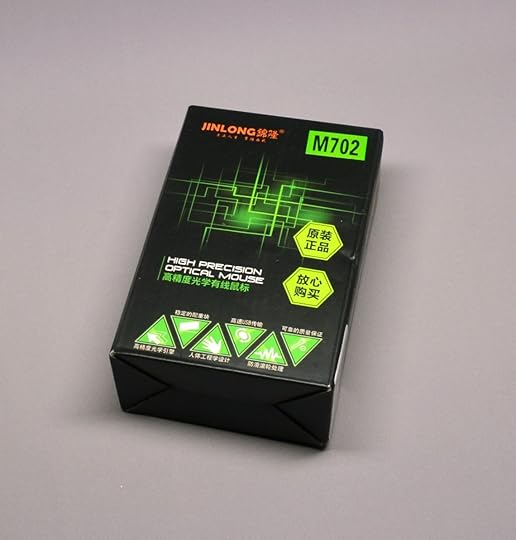
The box.
In my testing on my Windows 10 desktop computer, once I plugged the mouse in, it was detected right away and the LEDs behind the artwork started slowly pulsing, aka “breathing,” in blue. The scroll wheel, which is also clickable, worked exactly as expected. Pressing the first button below the scroll wheel changed the color of the lighting to pink, then red, then purple, and finally back to blue. Pressing the button below that dropped me to my desktop, exactly like pressing the Desktop function on the Windows menu bar. The side buttons allow for going forward and back in your Web browser (or any other program that works like that). You can also change the mouse’s resolution (DPI) between 800, 1200, 1600, and 2000, as well as turn off the LED lighting completely, although I personally didn’t try any of that.

What you get.
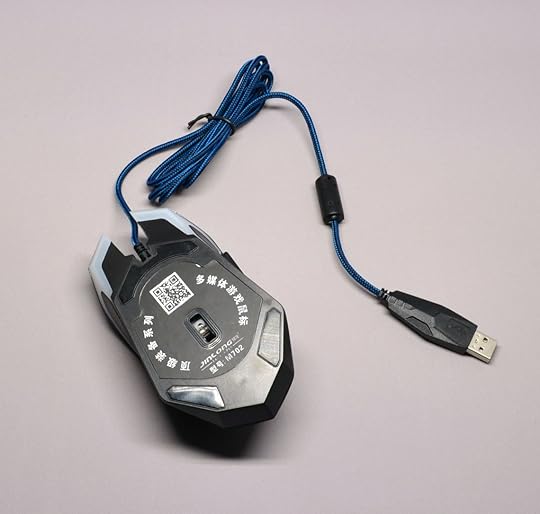
Another angle.
Movement was nice and smooth, and the mouse itself, with a nice wide body, was comfortable for me to use. The tangle-free, braided cable, is also a good length. As such, if you’re looking for a cool mouse that costs next to nothing, the JINLONG Ergonomic Wired Game Computer Mouse delivers (it’s also available in white).

Purple.
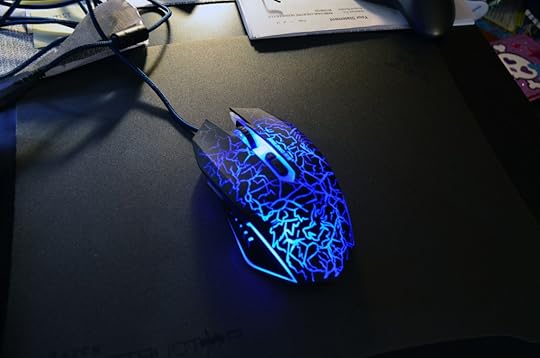
Blue.
Thanks to SWYGOO for the review unit.
The post Review: JINLONG Ergonomic Wired Game Computer Mouse appeared first on Armchair Arcade.
Review: Dr.Meter MS10 Digital Decibel Sound Level Meter
A sound level meter is a device used to make frequency-weighted sound pressure level measurements displayed in dB-SPL. Simply put, these devices feature a microphone diaphram that responds to changes in air pressure caused by sound waves. Practical uses for such a device are for measuring and quantifying relative sound levels in rooms and from various devices, helping you locate audio “hot spots” or sources of noise pollution, including dangerous sound levels.
Despite its relative low cost, the Dr.Meter MS10 Digital Decibel Sound Level Meter provides a nice measurement range of approximately 30dBA – 130dBA, with accuracy within +/- 1.5dB, and a resolution of 0.1dBA.

The packaging.
In the package you get the sound meter itself, the required single 9V battery, and an instruction manual. Pop the battery in, power on, and you’re measuring. Nice and simple.
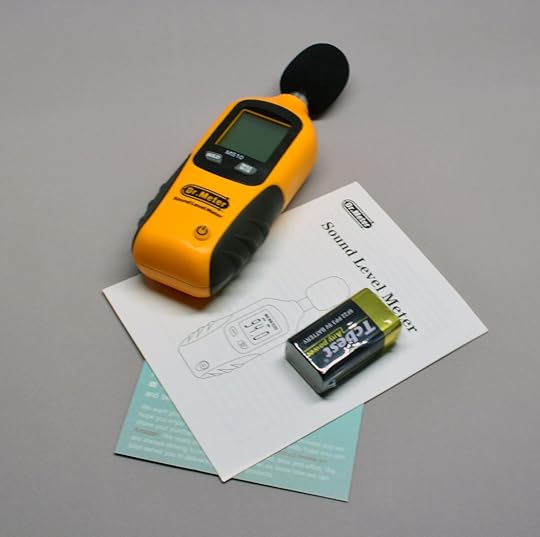
What you get.
On the unit itself is a tripod mounting hole and three buttons: power on/off, HOLD, and MAX MIN. The HOLD function freezes the reading in the display, while MAX MIN will show the maximum and minimum reading, respectively, on the display since it was last powered on.

Another angle.
While nothing flashy, the Dr.Meter MS10 Digital Decibel Sound Level Meter is a solid, easy-to-use tool that just works. If you’re in the market for a sound level meter, this product makes a fine choice.
Thanks to Hisgadget for the review unit.
The post Review: Dr.Meter MS10 Digital Decibel Sound Level Meter appeared first on Armchair Arcade.
Review: BESTEK 300W Power Inverter (12V DC to 100V AC)
If you’re often on the road and find your vehicle’s charging or power ports lacking, or feel limited by the car adapter options available for your mobile devices, then the BESTEK 300W Power Inverter (12V DC to 100V AC) may be right up your alley. This useful device plugs into your vehicle’s standard DC power port (aka, the “cigarette lighter”) and converts its output to two standard AC outlets, as well as two USB charging ports.

The box.
In the box, you get the power inverter itself with attached 24″ power cable and an instruction manual. As you can see from the photos, the BESTEK is nicely designed and surprisingly compact. Overall build quality is good.

What you get.
The two AC outlets are rated for 300W, with a maximum output of 350W max and a 700W peak. As expected, if for some reason you overload this device, its 40 amp fuse should have you covered. In terms of the two USB ports, they’re both 2.4A, with the top port auto-sensing.
When the BESTEK is powered on, a fan, which is definitely audible, constantly runs to keep the unit cool. Fortunately, along with all of the other safety protections in place, like the overload protection, there’s also overheating protection. Even when the power inverter portion is switched off (which you should do when the AC outlets are not in use), the USB ports still work, so it’s a device you can leave plugged in full-time if you wish.

Another angle.
This is definitely a useful device. It’s great for when you need to use your laptop (and of course, even larger, non-battery powered devices) and its battery is drained, or for long car rides when USB charging alone just won’t cut it.
Thanks to BESTEK for the review unit.
The post Review: BESTEK 300W Power Inverter (12V DC to 100V AC) appeared first on Armchair Arcade.
May 5, 2016
Review: iKits 10-Port USB Charging Station Dock
Gadgets! Gadgets everywhere! That’s what it feels like in our household, and, truth be told, that’s not just a feeling. It’s of course tough to find a home for all of these gadgets, let alone keep them charged. That’s where something like the iKits 10-Port USB Charging Station Dock comes in, since it’s handy as both a gadget home base and gadget charging station.

The box.
I’m reviewing the 10-port version, but there’s also an 8-port version for slightly less money. Each unit is surprisingly compact at only a little over 8 inches (210 millimeters) at its longest point. Each slot is about .75 inches (19.05 millimeters) wide, so they can easily accommodate most tablets, smartphones, e-readers, gaming handhelds, and other devices, including most of the ones in thicker cases.
In the box you get the base unit, two piece AC adapter (100-240 VAC), and an instruction manual.
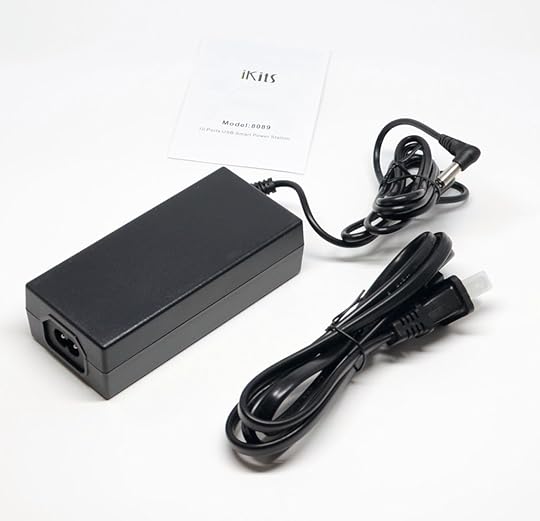
The AC adapter and instructions.
Set up is simple. Put the AC adapter together, plug it into the wall and base unit, and then plug your device and its USB cable into one of the available outlets. Repeat up to nine more times.
The 10 ports are rated to deliver up to 66 watts of power, which is enough for 10 devices charging between 1A (usually smaller devices) and 2.4A (usually larger devices). This translates to six ports at 1A and four ports with intelligent ICs to auto identify a device’s charging requirements (up to 2.4A) and charge it at the fastest speed possible.

Another angle on the base unit.
The iKits is great for a nightstand, which is where I’m using it, but also for the desktop. It’s a well-built, solid, and attractive unit that offers a lot of benefit for a reasonable price.
Thanks to iKits for the review unit.
The post Review: iKits 10-Port USB Charging Station Dock appeared first on Armchair Arcade.
May 3, 2016
Review: SENWOW Full HD DVR Dash Cam
Although crucial technology for when you’re in an accident, adding a dash cam to your vehicle has plenty of other uses, including for automatic recording of audio and video during interesting events. The best part is is that these devices are usually incredibly simple to set up and use. You basically attach the suction mount to your windshield, power the camera through your car’s DC power outlet, and then turn your car on, at which time recording begins.

The box.
The SENWOW Full HD DVR Dash Cam is one of the more full-featured offerings in this category, with a large function list and a range of configurable options. It can even be used as a Web cam for your PC.
In the box you get the camera itself, which has a removable 32GB microSD card pre-installed, windshield suction mount, DC car charger, miniUSB cable, and instructions. The camera is suitably small and solidly built, and features a high quality 3″ TFT LCD screen that is easily viewable in a variety of lighting conditions.

What you get.
The first thing you’ll want to do is set the date and time. After that, you can pretty much leave the extensive settings at the default and just set it up in your car. It should go on just about instantly as soon as you turn your car on. On a related note, to save yourself the same trouble that I had, I can tell you that pressing the OK button and then the M button twice will give you access to the settings, which will let you change the capture resolution to as high as 1920×1080 (default) or as low as 640×480, cyclic recording between Off and 10 minutes, Wide Dynamic Auto Adjustment of Light on or off, Exposure, Motion Detection to start auto recording when in standby mode, Audio detection to start auto recording when in standby mode, Date Stamp to put the date and time on the recordings, and Gravity Sensing to help protect a recording from being overwritten when a crash is detected. The second settings tab lets you adjust the aforementioned date and time, whether or not the beep sound is heard, the on-screen language, and the Frequency between 50HZ or 60HZ, and several other features. In short, this thing is loaded with options, but again, you’re probably just best off setting the date and time and leaving everything else as-is.
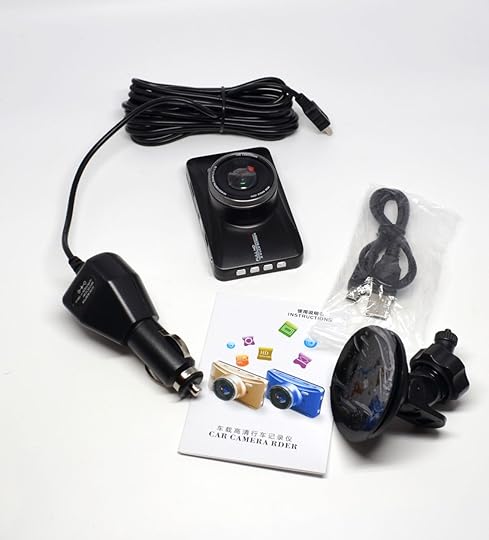
Another angle.
As mentioned earlier, with the included miniUSB cable (or equivalent), you can plug the device into your PC to access the device as a mass storage unit to get the videos off of the included microSD card (if you don’t have your own microSD reader), or to use it as a Web cam. You can also use the miniUSB cable to charge the dash cam’s battery, although as with most of these types of devices, it really doesn’t last long on battery power.
The video recording format is as MOV files, which is obviously widely compatible. As you can see in the sample video, at the highest resolution, 1920×1080, quality is excellent.
There is a lot to like about this dash cam, including the low price.
Thanks to SENWOW for the review unit.
The post Review: SENWOW Full HD DVR Dash Cam appeared first on Armchair Arcade.
May 2, 2016
Review: Azpen A746 7 inch Quad Core 8GB Android Tablet
If you’re looking for an incredibly inexpensive, versatile 7″ tablet for casual use, as a kid’s device, as complementary technology, or as something to experiment with Android, Azpen’s A746 offering provides a compelling option. The Azpen A746 7 inch Quad Core 8GB Android Tablet is available for less than $40 and provides the expected bullet-point list of features.

The box.
In the box, you get the tablet itself, user manual and other paperwork, USB AC adapter, dedicated DC charging cable for the AC adapter, a microUSB charging and sync cable, and a screen protector. The latter is a nice bonus, but these never work for me as I always get bubbles, which of course happened here for me as well. Considering the incredible low price of this tablet, I think I can risk a naked screen.

What you get, besides the tablet itself.
The main features of the A746 include: 840×480 resolution five point capacitive touch screen, 1.3 GHz quad-core CPU, 512MB of RAM, 8GB of onboard storage, microSD card slot supporting cards up to 32GB, Android 4.4 (KitKat), front facing camera (0.3 MP), headphone jack, dedicated volume buttons, and 802.11bgn wireless. About the only thing missing is Bluetooth support and a rear facing camera.

A top view, with the shipping shield still in place.
Interestingly, there are two different ways you can charge the A746. You can charge it with a microUSB cable, which is what I prefer, or with the DC USB adapter cable, which presumably will allow for faster charges when paired with the included (or other) AC adapter. Once fully charged, you’ll get a little over three hours of battery life, which is not great, but reasonable for a tablet that’s priced like this.

A rear view.
Performance is reasonably snappy across the board. I didn’t notice any real delays in opening programs, text entry, or playing games or videos. While I’m sure this will not do well with the most demanding applications, there was nothing I tried where I found it particularly lacking. Of course, a few areas that I did find lacking were in the screen’s viewing angles, which are rather limited, and in the built-in speaker’s audio quality, which was thin, not very loud, and poorly placed on the rear of the unit. Again, though, for the price and what you’ll likely use this for, neither of those issues are particularly surprising nor should they necessarily be deal-breakers.
For the price, this is a pretty great deal with lots of thoughtful features. Even the included user manual is rather extensive. If you need a tablet in this class, it’s hard to go wrong with the A746.
Thanks to Azpen for the review unit.
The post Review: Azpen A746 7 inch Quad Core 8GB Android Tablet appeared first on Armchair Arcade.
May 1, 2016
Review: iZEEKER VR Kit (Google Cardboard)
The iZeeker VR Kit is a simple, incredibly inexpensive implementation of the Google Cardboard standard. For the uninitiated, Google Cardboard offers a low-cost method of providing a workable virtual reality (VR) platform for use with our existing Android- or iOS-based smartphones. The iZeeker offering supports smartphones up to 6 inches in size.
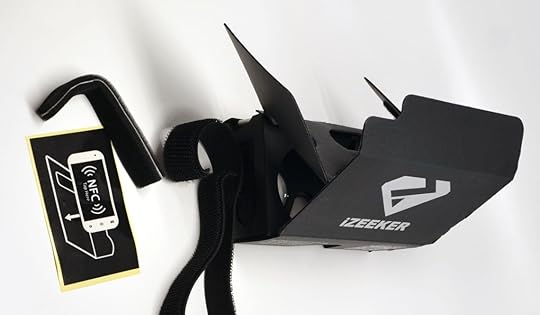
What you get.
In the package you get the cardboard enclosure with optics and a simple velcro head strap, as well as some optional padding. Since the viewer is open on the sides, you can easily plug in headphones. As usual, my test platform was my Apple iPhone 6 Plus, and the Google Cardboard app, as well as the Vrse app. Unlike several of the much more expensive headsets I tried, when you run the Google Cardboard app and scan the QR code on the enclosure (there’s also NFC support via an included sticker for Android devices with that feature), the iZeeker is immediately recognized as a 2015 Google Cardboard compliant device. In fact, perhaps even more importantly versus those other headsets, which seem to put most of their R&D into their plastic enclosures, this has a pseudo-button that is somehow recognized by the VR apps. In other words, for just $12.99, you get 100% functionality. Incredible.

My phone and its case fit great.
Although it took me a few minutes to figure out how to insert and enclose my phone, once I did, it fit just fine with my bulky Rokform case. So not having to remove my case is yet another plus versus those other headsets that cost many times what this does.
If you’re looking for a Google Cardboard device, look no further than this. In fact, if you want to save even more money, you can get the Yellow version for $1 less. Perfect.
Thanks to iZEEKER DIRECT for the discounted review unit.
The post Review: iZEEKER VR Kit (Google Cardboard) appeared first on Armchair Arcade.
April 30, 2016
Review: Koji Kondo’s Super Mario Bros. Soundtrack (33 1/3)
While I’m not personally familiar with the 33 1/3 book series from Bloomsbury Academic, it’s apparently well regarded for its analyses of famous music. As far as I know, Koji Kondo’s Super Mario Bros. Soundtrack (33 1/3) (Andrew Schartmann; 2015) is their first videogame entry.
The legendary Super Mario Bros. (1985) for the Nintendo Entertainment System (NES) and arcade makes for an interesting subject. The game itself is of course iconic, but, if you think about, so is its sound effects and music.
The premise is that Super Mario Bros. represented something of a sonic evolution in the audio arts for videogames. While I’d argue that’s not necessarily the case, I’d be hard-pressed to think of anything more iconic that’s not solely sound effects or a translation of pre-existing music released earlier than 1985 for console or arcade platforms.

The book is pocket-sized. It’s slightly taller than a 6 inch smartphone and about 50% wider.
Within the book is a brief and mostly unnecessary history and analysis of the game, then a complete deconstruction of its approximately three minute soundtrack. Given the length of this pocket-sized book, you’d be forgiven for thinking this was a superficial analysis, but it does amount to a deep dive, complete with accompanying musical notation.
While list price is $14.95 for a small book that’s about 140 pages, it’s only $11.13 on Amazon right now ($9.99 for the Kindle version). If you’re into videogames and music theory, it’s a fascinating read, and a unique angle on an oft-covered subject.
Thanks to Bloomsbury Academic for the review book.
The post Review: Koji Kondo’s Super Mario Bros. Soundtrack (33 1/3) appeared first on Armchair Arcade.
April 27, 2016
News: Nintendo NX to see release in March 2017 worldwide
While my prognostication skills are usually spot-on, when it came to the release of the Nintendo NX, which I thought would be previewed at E3 2016 in June and released holiday 2016, I was rather off (see here and here). According to Nintendo, the only major unveil at E3 will be a playable demo of the next Zelda game, which will have a simultaneous 2017 release on Wii U and NX (at least I got that part right). Further, the Nintendo NX will have a worldwide release March 2017 (one rumor for the “delay” is that the launch titles weren’t quite on schedule, which seems perfectly logical). Obviously, the “NX” name is still a placeholder.

2016 is officially the Wii U’s final year as Nintendo’s primary console.
So when will we know more about the NX, including it’s final name? Maybe Nintendo will have a one-off event holiday 2016 to maybe try and divert some Sony PlayStation 4 (PS4) and Microsoft Xbox One sales (and possible minor updates to both, which we’ll no doubt hear about at this year’s E3), because we know the Wii U won’t be diverting anything at this point. I guess we’ll see.
UPDATE: According to a Kotaku report, the reason for the delay was indeed behind-schedule launch titles. This was also the first official mention of the NX as the successor for both Wii U and 3DS, something I was quite adamant about previously.
The post News: Nintendo NX to see release in March 2017 worldwide appeared first on Armchair Arcade.
April 25, 2016
News: 8Bitdo Wireless Adapter is Now Available for Purchase
The 8BitDo wireless adapter is now available for purchase from Play-Asia, but right now it’s only for NES controller ports, so it only supports two main action buttons despite working with all 8BitDo wireless controllers (this is according to the source, Analogue; you can get more details here). I guess we’ll have to wait for a Super NES version for it work with more systems on platforms that desperately need it like the Retro Freak!

One usage scenario.
The post News: 8Bitdo Wireless Adapter is Now Available for Purchase appeared first on Armchair Arcade.



